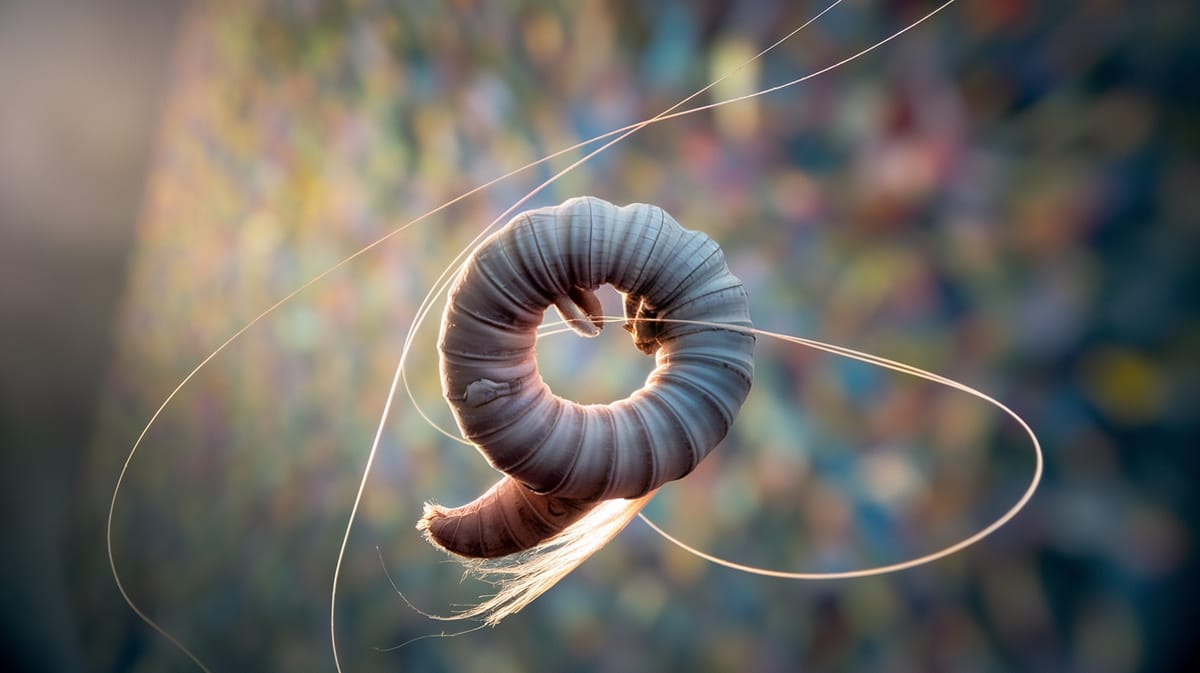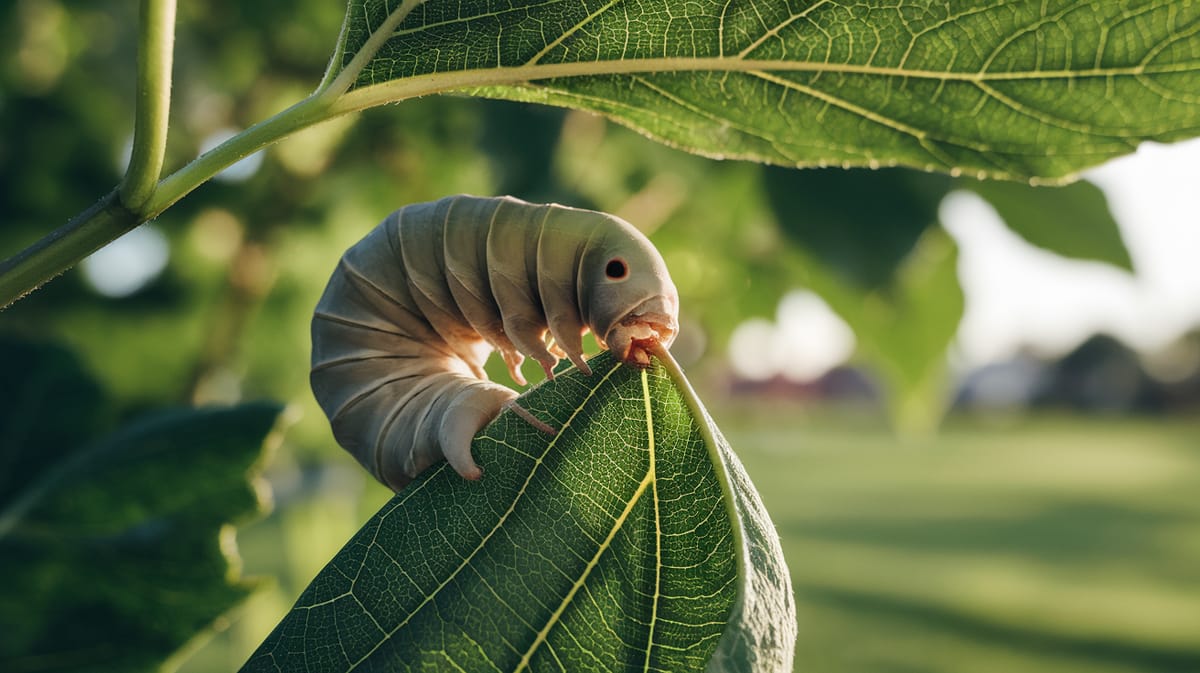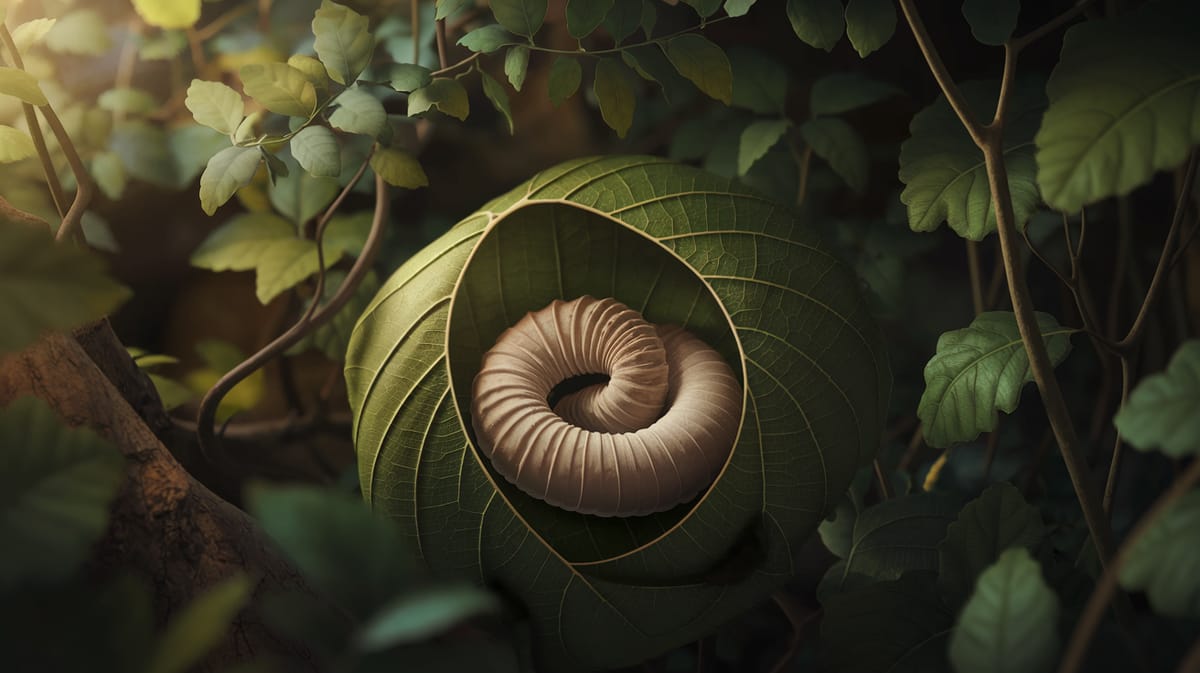Silkworm
Master of silk production, the Silkworm spins luxurious threads used for centuries in textiles. Its life cycle is crucial for understanding metamorphosis and sustainable silk farming.

Key Insights at a Glance
Did You Know?
Taxonomy & Classification
Silkworms are unique insects known for their ability to produce silk, a trait that has been cultivated for thousands of years, shaping human culture and economies. Let's understand the evolutionary journey and classification of these remarkable herbivores.
Limited Diversity
The Bombycidae family includes about 20 species, with Bombyx mori being the primary domesticated species used in silk production.
Ancient Domestication
Originating over 5,000 years ago in China, the domestication of silkworms has led to significant genetic changes, making them reliant on human cultivation.
Lifecycle and Growth
A remarkable journey of transformation from Egg to Adult.
Egg
Silkworm eggs are tiny and oval, incubating under optimal conditions to develop into larvae.
Larva
Silkworm larvae feed voraciously on mulberry leaves, rapidly growing and molting several times.
Pupa
Encased in silk cocoons, pupae transform as they develop into adult moths.
Adult
Adult silkmoths emerge with degenerated mouthparts, focusing solely on reproduction before dying.
Dietary Habits
Primarily a leaf-eater with adaptations for efficient digestion, it sustains itself on a diet rich in specific plant matter.
| DIET TYPE | DESCRIPTION |
|---|---|
| Primary Diet | Feeds mainly on mulberry leaves, utilizing specialized mouthparts to consume and digest foliage efficiently. |
| Secondary Diet | Occasionally consumes leaves from osage orange, lettuce, or beetroot plants when mulberry leaves are scarce. |
| Occasional | Rarely feeds on leaves of non-host plants, showing adaptability during unusual environmental conditions. |

Behaviour and Adaptations
Discover the fascinating adaptations that contribute to the Silkworm's unique survival capabilities.
Silk Production Mastery
Efficiently spins strong, continuous silk fibers for cocooning.
Complete Metamorphosis
Transforms from larva to moth with distinct developmental stages.
Leaf Consumption Efficiency
Consumes large amounts of mulberry leaves to fuel rapid growth.
Ecosystem Impact
Silkworms play a crucial role in fostering ecological balance, supporting biodiversity, and sustaining the environment.
Nutrient Recycling
Helps decompose mulberry leaves, enriching soil with vital nutrients.
Biodiversity Support
Provides food for predators, supporting various wildlife species.
Silk Production
Contributes to natural fiber production, reducing reliance on synthetic materials.
Conservation Challenges
Understanding and addressing the major threats to Silkworm populations.
Habitat Loss
Deforestation and land conversion reduce mulberry tree availability, essential for silkworms.
Chemical Exposure
Pesticides harm silkworms and their food sources, impacting survival rates.
Climate Change
Temperature fluctuations disrupt silkworm growth and silk production cycles.
Frequently Asked Questions
How long do Silkworm live?
Silkworms typically live for about six to eight weeks from hatching to their final moth stage. Their lifespan includes several stages: egg, larva (caterpillar), pupa (cocoon), and adult moth. The larval stage lasts around four to six weeks.
What do Silkworm eat?
Silkworms exclusively eat mulberry leaves. They have a voracious appetite and will consume a large amount of these leaves throughout their larval stage. This diet is crucial for producing high-quality silk, as the mulberry leaves provide essential nutrients for silk production.
Are Silkworm poisonous?
Silkworms are not poisonous. They are harmless to humans and pets. Though they do not pose any toxic threat, handling them should be done gently to avoid harming the delicate caterpillars.
Are Silkworm endangered?
Silkworms are not endangered. They have been domesticated for thousands of years for silk production, and their populations are maintained through breeding in controlled environments. Wild silkmoth species, however, may face threats from habitat loss and environmental changes.
What do Silkworm symbolize?
Silkworms often symbolize transformation and creativity. In various cultures, they represent hard work and resourcefulness due to their role in creating silk. In traditional Chinese culture, they are linked to prosperity and the ability to turn raw materials into valuable products.
Do Silkworm bite?
Silkworms do not bite. They lack the necessary mouthparts to bite or sting. Their mouthparts are adapted for chewing soft mulberry leaves, making them completely harmless to humans and other animals.
What color are Silkworm?
Silkworms are typically white or cream-colored during their larval stage. This pale color can change slightly depending on their diet and the environment but remains generally light. As they mature into moths, they develop a more grayish-brown hue.
Does a Silkworm have wings?
Adult silkworms, which are moths, have wings. The adult silk moth has a wingspan of about 3 to 5 centimeters. However, these moths are not strong fliers, as they have been bred primarily for silk production, not for flight capability.
What does a Silkworm look like?
Silkworms in their larval stage are creamy white caterpillars with a smooth, soft body and a distinct segmented appearance. They grow up to about 7 centimeters long. As they develop, they spin cocoons from which the adult moths emerge.
Is a Silkworm an insect?
Yes, a silkworm is an insect. It belongs to the order Lepidoptera, which includes all moths and butterflies. Like other insects, silkworms have a distinct life cycle, including egg, larva, pupa, and adult stages.
Related Insects
Discover insects with similar characteristics to Silkworm - including shared habitats, diets, and taxonomic classifications
Share this profile
Help others discover Silkworm
